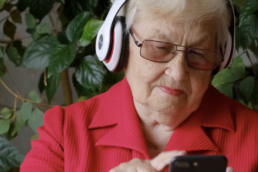Opioids are often used to treat non-malignant pain. However, it has been suggested that opioids are not any more effective than non-opioid treatments and could potentially be harmful in the short- and long-term.
Written by:
Vaidhehi Veena Sanmugananthan
Edited by:
Georgia Hadjis
Despite this, opioids remain heavily prescribed, with over 142 million opioid prescriptions being administered in the US in 2020. The best methods to reduce opioid use are not yet clear. For example, opioid tapering has been shown to be too abrupt and lacks alternatives, which could potentially lead to harmful and suicidal behaviors. Alternatively, UTCSP scientist Dr. Andrea Furlan and her team suggest that multimodal non-pharmacological treatment approaches to improving chronic non-malignant pain may help reduce the harm associated with tapering. As such, they conducted the I-WOTCH (Improving the Wellbeing of People With Opioid Treated Chronic Pain) randomized clinical trial (RCT) to test the effectiveness of these self-management approaches to improve pain-related disability and reduce opioid use in those with non-malignant chronic pain.
Six-hundred-and-eight adult participants taking strong opioids for their non-malignant chronic pain (e.g.buprenorphine, morphine, fentanyl, methadone, oxycodone, tapentadol, tramadol, and others), were randomized 1:1 to either usual care or 3-day-long group sessions which focused on skill-based learning. Individuals who underwent the group sessions also received supplementary 1-on-1 support sessions from a nurse or lay-individual lasting 12 months. These studies were conducted in primary-care facilities in England. The primary outcome measures were the proportion of individuals that came off opioids after 12 months, and changes in the Patient-Reported Outcomes Measurement Information System Pain Interference Short Form 8a (PROMIS-PI-SF-8), which measured pain interference towards daily living.
At the 12-month follow-up, in which 433 participants returned, there were no statistically significant differences on PROMIS scores between the two groups ( −4.1 in the intervention and −3.17 in the usual care groups; between-group difference: mean difference, −0.52 [95% CI, −1.94 to 0.89]; P = .15). Discontinuation of opioids occurred in 29% (65/225) of the intervention group and 7% (15/208) of the usual care group. While serious adverse events were reported in 8% (25/305) of the intervention group and 5% (16/303) of the usual care group, none were related to the intervention itself. Four individuals received care for probable opioid withdrawal.
The results suggest that a skill-based learning intervention helped reduce patient-reported use of opioids in comparison to usual care. However, this non-pharmacological intervention did not significantly impact pain interference on daily living. The utility of these skill-based interventions as a way to reduce opioid use for chronic pain and avoid harmful effects of opioid tapering should be investigated further.
The results suggest that a skill-based learning intervention helped reduce patient-reported use of opioids in comparison to usual care.

